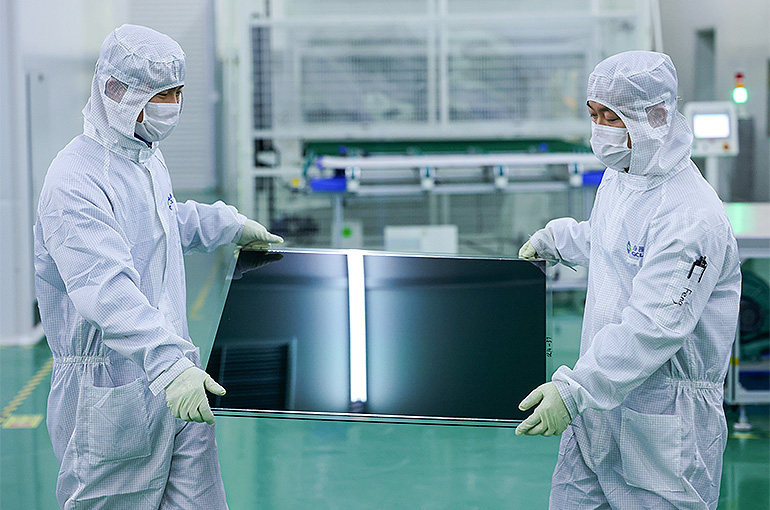 Chinese Solar Firms Embark on Capacity Expansion, Upgrades to Stay Ahead of the Game
Chinese Solar Firms Embark on Capacity Expansion, Upgrades to Stay Ahead of the Game(Yicai Global) July 14 -- China’s five largest photovoltaic panel makers, including Longi Green Energy Technology, have announced CNY90 billion (USD12.6 billion) worth of production expansion projects since April, despite growing concerns of overcapacity flooding the market, to avoid being left behind as more advanced technologies are developed.
Although the PV industry has excess capacity, high-premium advanced products are in short supply, industry insiders told Yicai Global. Solar companies are caught in the dilemna of being superceded if they continue to use their old equipment.
PV production gear is now going out of date in six years, when a decade ago, it would last around 10 years, and this could further shorten to three years, a senior executive at a listed PV firm told Yicai Global. If companies stop building new production lines, they are at risk of being overtaken by newcomers to the field.
“Industry leaders are hurrying to build new facilities to replace outdated ones as competition intensifies,” the head of another listed solar company said. This benefits the long-term development of the PV industry.
“PV firms will gradually phase out the production lines for old P-type solar products, and replace them with the latest N-type ones,” the president of a listed PV company told Yicai Global.
Many solar firms are building new factories that will make N-type monocrystalline silicon products with higher photoelectric conversion efficiency, such as N-type tunnel oxide passivated contacts and N-type heterojunction with intrinsic thin-layer silicon wafers, which are used in batteries and solar panels, Yicai Global has learned.
For instance Jinko Solar, which is a leading supplier of TOPCon solar modules, said in May that it will invest CNY56 billion (USD7.8 billion) to build a factory with an annual capacity of 56 gigawatts that will not only make PV panels, but will also produce products from all links of the industrial chain, from silicon rods and wafers to batteries.
Upgraded facilities can not only make more advanced products, they can also cut production costs.
It will take two to three years for the new production lines to come online, the senior executive said. So companies can control the construction pace of these facilities to wait for more the outdated facilities of their smaller rivals to be squeezed out of the market.
Editors: Tang Shihua, Kim Taylor